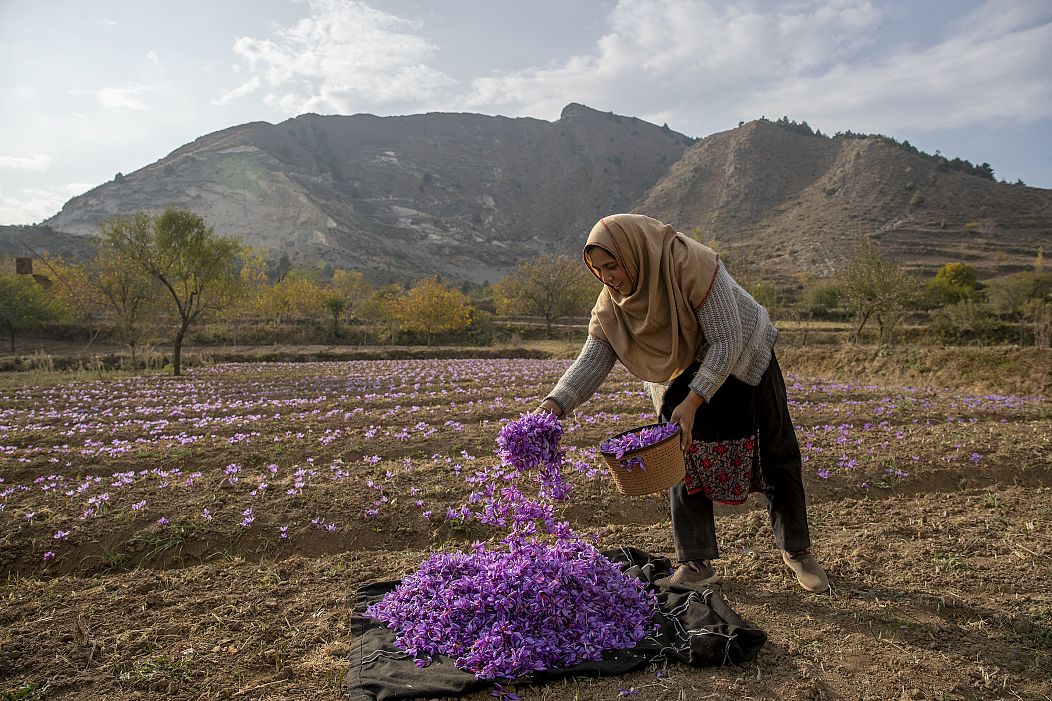The Saffron Crocus (Crocus sativus) blooms in Kashmir Valley, surrounded by the Himalayas on all sides, for only two weeks a year.
At the end of autumn, usually in November, local families race against the clock to harvest its flowers to produce one of the world’s most precious spices: saffron. It can sell for more than 3,000 euros a kilo.
Widely used in Persian, Indian, Arab and European cuisine, this spice’s scents of honey and hay are a journey through time and culture.
The process for saffron production is very meticulous and labour-intensive.
First, the delicate flowers are hand-picked and placed in wicker baskets. To get a kilogram of saffron , 150,000 flowers have to be picked.
Then the purple petals are carefully removed from each flower, also by hand, which reveals three delicate stigmas that are later dried in the sun or with special machines.
There are alternatives to families working to produce the spice. Modern factory facilities have been set up to increase the quality and quantity of saffron production. Most of the local famers, however, still prefer to use centuries-old techniques for picking and drying the material.
Besides being irreplaceable in the kitchen, saffron is used in a wide range of other products, including medicine and cosmetics.










